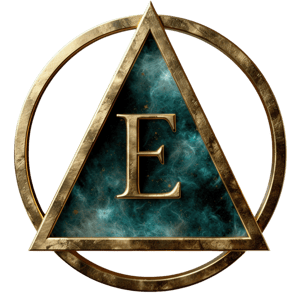
The Prompt Algorithm & How To Understand It
Is It Difficult? Or Has Everyone Just Been Explaining it Wrong
PROMPTS&ALGORITHMS
Blake McCollum
9/18/20245 min read



Alright, let’s get into it—the mysterious world of the prompt algorithm. At its core, it's actually a lot less daunting than people make it out to be. You see, this algorithm is like an incredibly talented, hyper-literal artist with a twist: it speaks a completely different language than we do. First, it has to decipher what we say in human language, break it down into its own algorithmic language, do its magic, and then translate it back into something we understand. Sounds simple, right? Not quite. This back-and-forth translation can sometimes cause the intended meaning to get a little... garbled.
Imagine explaining a complex idea to someone through a game of telephone. Each time the message is passed along, there's a chance something gets lost, misinterpreted, or subtly altered. That's pretty much what's happening with the prompt algorithm. We feed it a prompt like, "Create a serene mountain landscape at dusk," and the algorithm takes that and tries to decode what "serene," "mountain," and "dusk" mean in its world of data points and patterns. And here's the catch: the algorithm doesn't "see" things the way we do. To it, "serene" might translate into a color palette, "mountain" into geometric shapes, and "dusk" into a specific gradient. By the time it pieces these elements together into an image, we sometimes end up with something that's not quite what we pictured.
This is where most of the confusion comes in. It's not that the algorithm is impossibly difficult to understand; it's more like trying to communicate with someone who interprets everything in a very literal way. If there's even a hint of vagueness in your instructions, the algorithm is going to take liberties you might not expect. So when people say the prompt algorithm is hard to grasp, what they're really saying is that it requires us to shift how we think about communication. We're used to speaking to other humans who can read between the lines, infer tone, and understand context intuitively. The algorithm, on the other hand, is more like an alien mind—brilliant, but entirely focused on the data.
But here's the cool part: once you understand how this translation process works, you start to see the algorithm's quirks as opportunities rather than obstacles. The key is learning how to speak its language, to be both precise and creative. You have to guide it like you would an artist, providing enough detail to steer it in the right direction while giving it room to interpret within those bounds. Say you want "a tranquil, mystical forest bathed in moonlight." If you're not specific about what "mystical" means—are we talking glowing plants, ethereal fog, or ancient trees with faces?—the algorithm might throw something unexpected at you.
People often think the algorithm is this enigmatic, impossible-to-master tool, but it's really about honing your communication with it. Think of it as learning to dance with a partner who has their own style—once you get the rhythm down, you can create some stunning moves together. And yes, there are more advanced techniques like prompt stacking that can take things to a whole new level, but that's a topic for another day. For now, it's all about understanding that the algorithm isn't just misbehaving when it gives you something off-kilter. It's speaking its own language, and it's up to us to learn how to communicate clearly within that framework.
Lost in Translation?
The Power of Words:
Crafting Prompts That Unveil New Worlds
Words are the algorithm's lifeblood. They are the building blocks, the brushstrokes, and the melody that guides it to create. Every single word you use in a prompt holds weight, influencing the algorithm's output in ways that can be subtle or transformative. It’s like a puzzle where each piece matters—even the smallest, seemingly insignificant detail can change the entire picture. When it comes to the algorithm, every word is a signal, guiding it to interpret and construct based on the vast ocean of data it’s been trained on.
Now, here’s the tricky part. Because the algorithm doesn’t inherently "understand" in the human sense, it relies entirely on how we phrase things. Think of it as casting a spell: if you use the right words in the right order, you can summon a whole world you never knew existed. But if you’re off by even a word or two, the magic might fizzle or go in an unexpected direction. That’s why crafting prompts isn't just about throwing words together; it's about being deliberate, precise, and imaginative all at once.
You might be tempted to write a prompt like, "Create a beautiful sunset over the ocean," and sure, you’ll get a result. But to truly unlock the algorithm's potential, you need to dig deeper. What does "beautiful" mean to you? Is it the colors of the sky? The reflection on the water? The tranquility it evokes? By layering in specifics—"a serene, golden sunset with vibrant oranges and purples reflecting on a calm ocean"—you’re giving the algorithm more to work with, allowing it to shape a more vivid and accurate image of what you're envisioning.
This is where the art and science of prompt creation come into play. Every word you add—or leave out—nudges the algorithm in a different direction. It’s a balance between guiding it with clarity and leaving enough room for the unexpected brilliance that AI can bring to the table. The more you understand how each word affects the outcome, the more control you have over what the algorithm creates. It's not just about avoiding confusion or getting a "better" result; it's about using the algorithm as a tool to bring your vision to life with an almost magical level of detail.
Unlock Your Full Creative Potential with Expert Guidance
But here's the reality: mastering this language isn't something that happens overnight. It takes practice, a bit of trial and error, and a deeper understanding of how the algorithm thinks. That’s where I come in. If you're ready to explore the full potential of AI art and learn how to set up prompts that truly resonate with the algorithm, let's work together. During a one-on-one session, we'll dive into the nuances of prompt creation, tailoring the process to your creative goals. You'll learn how to wield words like a master artist uses a brush, unlocking the power to generate exactly what you envision—and perhaps even more.
Ready to step into this world of endless creative possibilities? Book an appointment with me, and let's uncover the secrets of the algorithm together. Whether you're a seasoned digital artist or just starting out, I'll help you navigate this fascinating landscape, guiding you to create prompts that not only communicate with the algorithm but make it sing. Let's make some magic happen.



